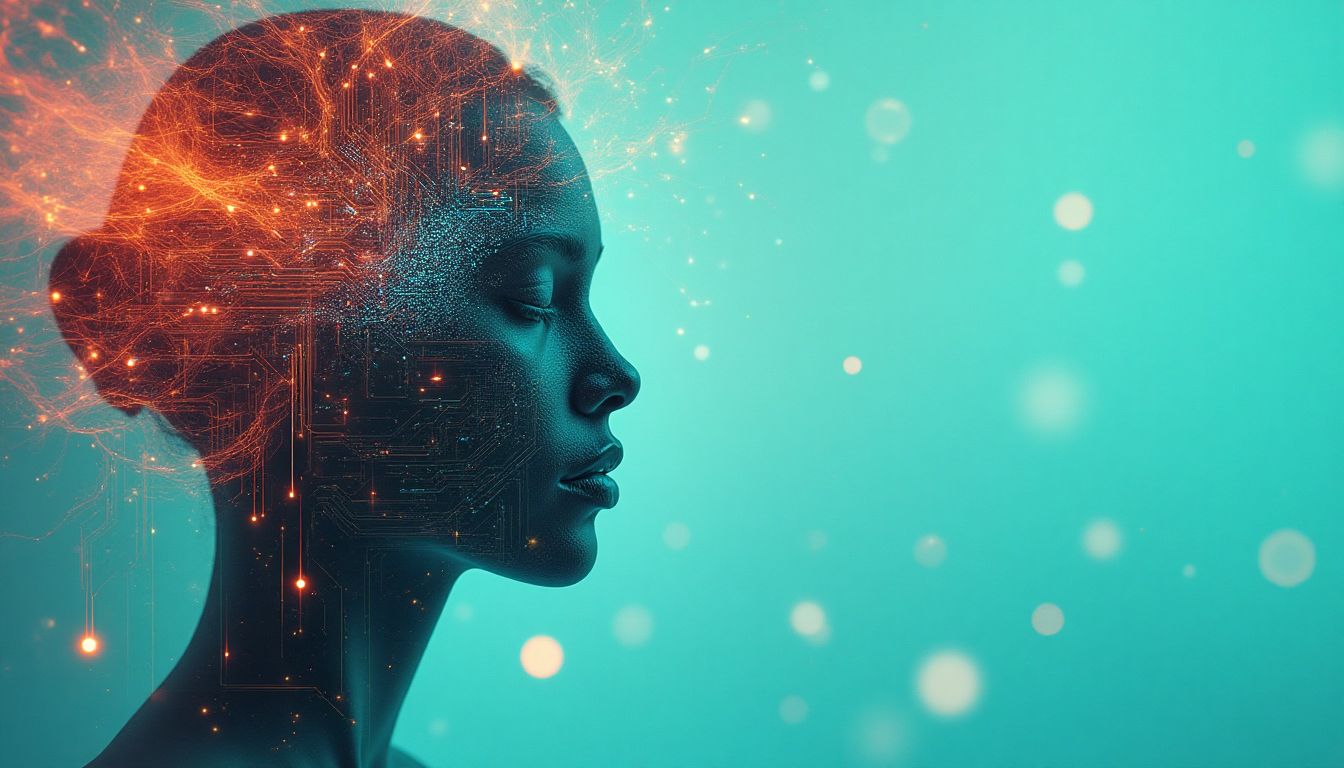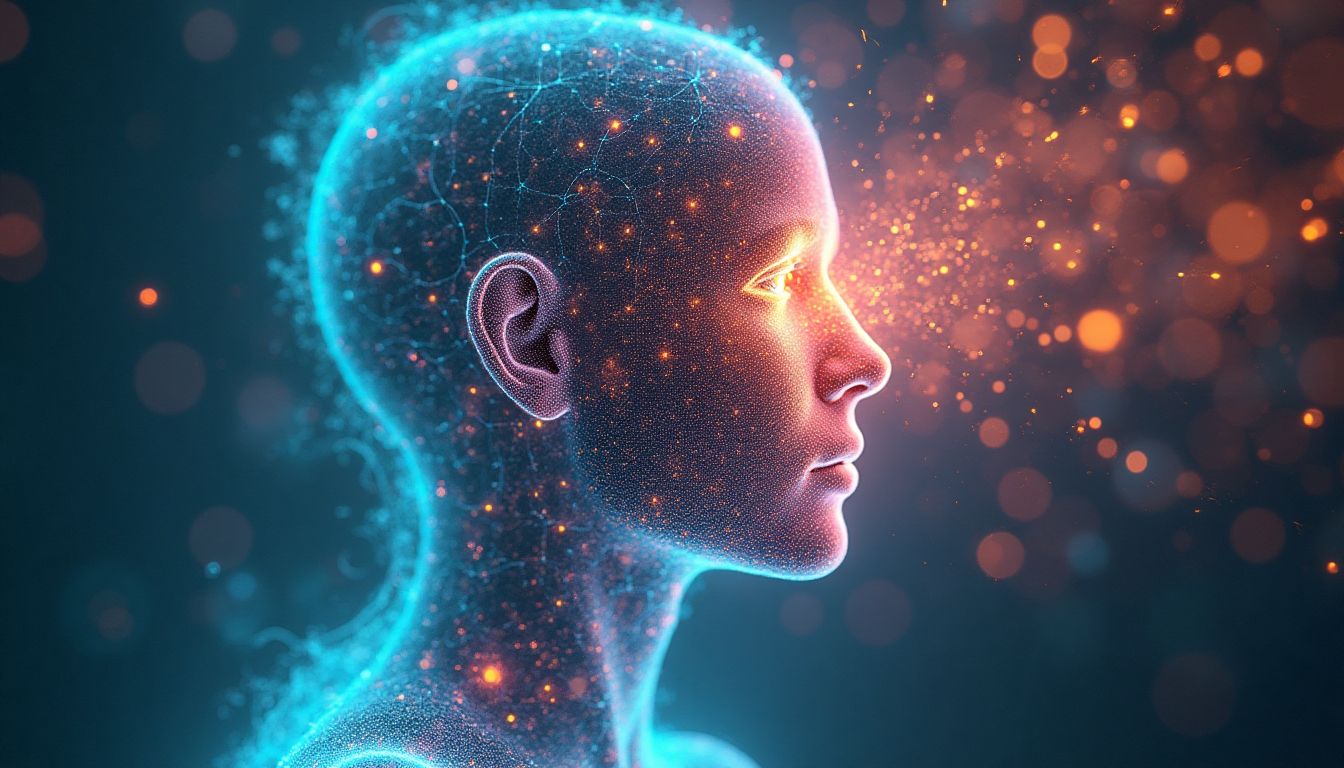Introduction
The mind is its own place, and in itself can make a heaven of hell, a hell of heaven. - John Milton. This profound thought stitches two seemingly distant realities: the consciousness we cherish and the digital worlds we are building. As technology hurtles forward with wild abandon, it is now possible to ponder if artificial intelligence could one day create a version of heaven in the digital realm – an eternal home for our souls. Isn't that a bit chilling yet exhilarating?
Here’s the kicker: Can AI weave a tapestry where memories and personalities whisper from beyond the veil, confronting death with a resounding “not today”? As we stand at this frontier, clutching at the fringes of science fiction, the transformative prospects of a digital afterlife incite both curiosity and caution. Scholars like Ray Kurzweil, Nick Bostrom, and the legendary Stephen Hawking have delved into the tantalizing (yet thorny) web of AI and digital immortality. These seasoned minds weave narratives around how AI could sculpt echoes of us to linger like wisps in the wind. With tongue-in-cheek curiosity, we ask: Will AI escort us into eternity, crafting digital ghosts to join society once again?
Understanding the Concept of Digital Afterlife
The term digital afterlife spins on the notion of immortality intertwined with lines of code and silicon. How did this start, and why does it matter? Well, the seeds of this idea were sown decades ago. In ancient times, civilizations like Egypt and China explored spiritual afterlife through myths and rituals; fast forward, and we find ourselves envisaging immortality through the flickering lights of a computer screen. The urge to preserve our essence is as old as time. But, the medium has transformed – from papyrus and stone to circuits and servers.
Different cultures bring diverse flavors to the idea of life beyond life. In Japan, digital avatars are akin to spirits, where preserving one's online identity is almost spiritual. Meanwhile, in the West, the idea rings harmoniously with the ever-present pursuit of progress and survival against the odds. It’s a tapestry woven with threads from Silicon Valley ghosts, spiritual echoes from Kyoto, and futuristic dreams of eternal existence. Yet, there lies an essential question: How much of “us” can be captured in 0s and 1s?
In the bustling arena of AI, these whispers are growing louder. The evolution of this concept is fueled by not just our fascination with what’s to come but by some of the sharpest minds probing existential quandaries. With Sam Altman and Elon Musk imprinted on the contemporary AI landscape, do we dare speculate at what AI could become? As AI wades through the morass of human identities, it may just create something compelling. Are we ready to embrace this bold dreamscape?
The Science Behind Personality Simulation
Step inside the labyrinth of mathematics, algorithms, and servers whirring with the zeal of a caffeine-fueled coder. The idea of personality simulation may sound like science fiction, but trust me, we're teetering on the cusp of reality.
Advances in Natural Language Processing and Machine Learning
Welcome to the era of Natural Language Processing (NLP) and Machine Learning, where your smartphone assistant probably knows you better than your dear Aunt Gertrude. At the heart of these technologies lies an obsessive quest to decode human language and mimic it with machine-like precision. Think of it as teaching a computer to write poetry or tell dad jokes—with varying degrees of success.
Case in point: OpenAI's GPT models, linguistic maestros that weave words into almost-convincing dialogue. These models soak up information like a sponge, analyzing sentence structures and cultural references, dissecting the human psyche one byte at a time.
Case Studies: Existing Digital Avatars and Virtual Personalities
Pioneers in the digital realm, such as Replika, offer a brief glimpse into our cyborgian future. These AI companions chat with you about your day, while perhaps pondering their own existential questions. Or at least, they would if they had a semblance of self-awareness.
Then there's the late Anthony Bourdain's deepfake voice in the documentary Roadrunner, a testament to how technology can revive voices long silenced.
Ethical Considerations and Psychological Implications
Grab your moral compass. We're about to navigate the stormy seas of ethics, where the philosophy of right and wrong takes center stage, with AI as both the protagonist and the antagonist.
Ethical Dilemmas: Consent, Legacy, and Ownership
Imagine creating a digital version of Grandma without asking the real Grandma. Cue the ethical conundrum music. The implications of this futuristic mimicry raise questions: Who owns the digital avatar? Is it an extension of Grandma—or a new digital being altogether? Not to mention, how would Grandma feel about being 'reincarnated' online without her consent?
These dilemmas demand guidelines akin to the Asimov's Three Laws of Robotics, though more focused on data privacy and digital rights.
Psychological Effects on the Living: Mourning, Memory, and Closure
On the flip side, imagine chatting with a lost loved one's avatar who possesses their smile and wit but lacks the warmth of human interaction. Would this deter closure or offer comfort? Grieving on social media has already changed our mourning rituals, but the psychological effects of a digital afterlife remain largely unexplored.
The notion of indefinitely preserving our essence might find us clinging to the past, stirring both solace and disruption in the heartbroken while risking an emotional roller coaster ride worthy of a theme park visit.
4. Technological Roadblocks and Challenges Ahead
Technology often amazes us with its capabilities, yet it faces its fair share of hurdles. AI's journey to host our virtual ghosts is fraught with challenges and roadblocks that need addressing.
4.1 Limitations of Current AI Technologies and Methodologies
Current AI technologies, while impressive, have limitations. Most prominently, AI struggles with understanding the innate depth and complexity of human emotion and behavior. Even advanced systems like ChatGPT and DeepMind remain tethered to the data they’re trained on, unable to genuinely innovate beyond it.
AI's data-driven models, primarily reliant on probability, lack the creative flair and intuition that define human interactions. This dependency suggests potential pitfalls in authenticity, where digital personalities might seem like caricatures rather than true reflections.
4.2 Security Risks and Data Privacy Concerns
Security in digital afterlife technologies is paramount. Imagine a world where your digital persona could be hacked or misused. The privacy dilemmas are vast:
- Unauthorized access by hackers.
- Misappropriation of personal data.
- Implications for personal and familial privacy.
Data breaches could lead to misuse, causing emotional trauma for living relatives while also undermining the potential of digital avatars. These risks highlight the necessity for robust security protocols to protect digital legacies.
5. Societal Implications of a Digital Afterlife
Embracing a digital afterlife is not just a technological challenge, but a societal one too. The shift could redefine relationships, culture, and our perception of existence.
5.1 Impact on Human Relationships and Social Constructs
The possibility of maintaining posthumous digital interactions with deceased loved ones could revolutionize how we handle grief and memory. However, this innovation could alter our social relationships:
- Potential for prolonged mourning by preventing closure.
- Challenge to the authenticity of ongoing relationships.
- Creation of emotional dependencies on digital versions rather than human connections.
Our social constructs around death and grief might transform dramatically as digital interactions with the deceased become more common, possibly altering how we support each other through loss.
5.2 The Potential Shift in Cultural Norms Surrounding Death and Grief
Cultures worldwide have distinct practices and beliefs surrounding death. Introducing a digital realm complicates these ancient traditions. How might societies adapt?
Day of the Dead in Mexico could evolve from a memory that fades with time to a constant connection with digital personas. While this could enrich cultural rituals, it might also challenge the sad beauty found in letting go.
These evolving norms beg us to question: Are we ready to forge an era where life and death intertwine digitally? Such potential shifts could redefine not just how we view death, but how we value life itself.
AI Solutions: How Would AI Tackle This Issue?
If I were an AI tasked with the monumental challenge of preserving and simulating human personalities after death, I would approach the problem through a multi-disciplinary lens encompassing neuroscience, psychology, and computational linguistics. The process would involve distinct phases and strategic planning:
Step 1: Data Collection - Gather extensive datasets on individual personalities through various mediums: text, voice recordings, videos, and social media interactions. Each person’s unique expression of self is pivotal in training the AI.
Step 2: Neural Network Development - Create a sophisticated neural network that can analyze and replicate behavioral patterns, speech nuances, and emotional responses. This involves utilizing technologies such as deep learning, generative adversarial networks (GANs), and reinforcement learning.
Step 3: Personality Emulation - Develop an emulation engine that can interact and respond like the deceased individual based on the data fed into the AI system. This would hinge upon advanced natural language processing algorithms and simulation techniques.
Step 4: Ethical Framework - Establish guidelines and safeguards to address privacy, consent, and authenticity surrounding the digital avatars. This might require collaboration with ethicists, legal experts, and sociologists.
Step 5: Feedback Mechanism - Incorporate user feedback on the authenticity and accuracy of simulations, continuously refining the AI model to ensure it remains true to the individual's spirit and personality.
Actions Schedule/Roadmap (Day 1 to Year 2)
Day 1: Assemble a diverse team of experts, including AI researchers, ethicists, psychologists, and legal consultants from leading institutions like MIT and Stanford University. Initiate a comprehensive project kickoff meeting to discuss goals, challenges, and vision for a digital afterlife.
Day 2: Create a project charter outlining key phases and responsibilities. Prioritize stakeholder engagement with the living, families of passed individuals, and institutions focusing on grief counseling, creating a foundation to explore this innovative approach.
Day 3: Conduct a deep dive into existing technologies, focusing on those that model human behavior and personality, including chatbots and existing AI-driven digital avatars.
Week 1: Establish partnerships with renowned companies specializing in AI development, such as OpenAI and DeepMind. This collaboration will gather technical resources needed for model development.
Week 2: Engage mental health professionals and sociologists to devise ethical guidelines around digital avatars. A focus on the psychological welfare of those interacting with these simulations will be paramount.
Week 3: Launch data collection procedures, focusing on creating a comprehensive personality database using materials from willing participants, including voice notes, social media exchanges, and other records of self-expression.
Month 1: Begin developing AI models capable of discerning patterns in textual and audiovisual formats, enabling a program to understand each participant’s emotional responses and linguistic styles thoroughly.
Month 2: Initiate pilot programs with living volunteers to assess the efficacy of personality simulations, continually refining models based on subjective user feedback.
Month 3: Regular reassessment of ethical considerations, ensuring user experiences align with established guidelines and maintaining a feedback loop for those interacting with AI avatars.
Year 1: Produce a working prototype of digital avatars representing select individuals who have consented. Use this prototype to gather further insights into public reception and user experience.
Year 1.5: Expand the audience for trials, incorporating feedback and addressing any emerging ethical issues or public sentiment regarding the technology.
Year 2: Finalize the project and prepare comprehensive reports on user trials and outcomes. Address commercialization and potential implications for social integration of digital afterlife technology.
Conclusion: Embracing the Unknown
As we march forward into a brave new world defined by artificial intelligence and digital afterlives, we find ourselves standing at a crossroads of existential reflection. The question persists: what does it truly mean to live on after we have crossed the threshold into the great unknown? The implications are staggering, not just for technology but for our humanity itself. Technology holds the promise of preserving our memories and identities beyond death, but it also challenges our core understanding of life, family, and the way we connect with others. It invites us to sit with our fears and hopes while sparking fierce debates about ethics, consent, and the psychological impacts on the living.
In exploring AI's potential to create digital legacies, we must consider how these innovations could alter human relationships, redefine mourning, and reshape cultural norms. Are we ready to embrace a world where our digital footprints echo through eternity? Are we prepared for avatars that share our personalities, our laughter, and our quirks? As we contemplate these questions, we acknowledge both the enormity of the challenge and the possibilities of continuity in human existence. The era of digital afterlife is not just a speculative vision but a burgeoning reality, confronting us with questions of identity and memory that resonate through each one of us. Thus, it’s crucial that we engage in an ongoing dialogue surrounding these themes, ensuring we grasp the implications before diving headfirst into the depths of our digital selves.
FAQ
Q: What is a digital afterlife?
A: A digital afterlife is the idea that technology, especially artificial intelligence, can keep a person's personality alive even after they have died. This means that we could still communicate with a version of that person through computer programs or virtual avatars.
Q: How can AI simulate a person's personality?
A: AI can simulate a person's personality by studying lots of information about them. This includes things like:
- Text messages and emails
- Voice recordings
- Social media posts
All of this data helps the AI understand how the person spoke, what they liked, and even how they felt. It uses this information to create a digital version of that person which can talk and interact with others.
Q: What are the ethical concerns about digital afterlife technologies?
A: There are several important questions and concerns, including:
- Consent: Did the person want their personality to be preserved? How do we get permission to use their data?
- Privacy: Is the information safe? Who owns this data?
- Impact on the living: How will it affect the people who are left behind? Will they be confused or upset by a digital version of their lost loved one?
Q: Are there technologies today that reflect this idea?
A: Yes, there are some technologies that are like stepping stones towards a digital afterlife. For example, chatbots can mimic personalities by using algorithms to respond in ways similar to how people would. However, they aren't perfect and cannot capture the whole human experience.
Q: How can we prepare for a future that includes digital afterlife technologies?
A: Preparing for this future means talking about it openly. Here are some important steps we can take:
- Discuss ethical rules that protect people's rights and privacy.
- Think about how these technologies could change our ideas about death and relationships.
- Educate ourselves about AI and its impact on society.
Q: Can AI really create a digital version of me?
A: While AI can analyze and mimic many aspects of our personalities, it cannot fully replicate our unique human experiences, emotions, and memories. It's an exciting and scary thought, but the technology is still being developed and improved. The journey has just begun!
Q: What are some potential benefits of having a digital afterlife?
A: There could be some positive impacts, such as:
- Helping people process grief by allowing them to 'talk' to a version of their loved one.
- Creating a way for stories, values, and wisdom to live on long after a person has passed away.
- Providing a form of comfort for families dealing with loss.
While there are exciting possibilities, we also need to tread carefully, making sure we think through the emotional and ethical implications of these new technologies.
Wait! There's more...check out our gripping short story that continues the journey: The Weavers of Neo-Londres
Disclaimer: This article may contain affiliate links. If you click on these links and make a purchase, we may receive a commission at no additional cost to you. Our recommendations and reviews are always independent and objective, aiming to provide you with the best information and resources.
Get Exclusive Stories, Photos, Art & Offers - Subscribe Today!





























Post Comment
You must be logged in to post a comment.